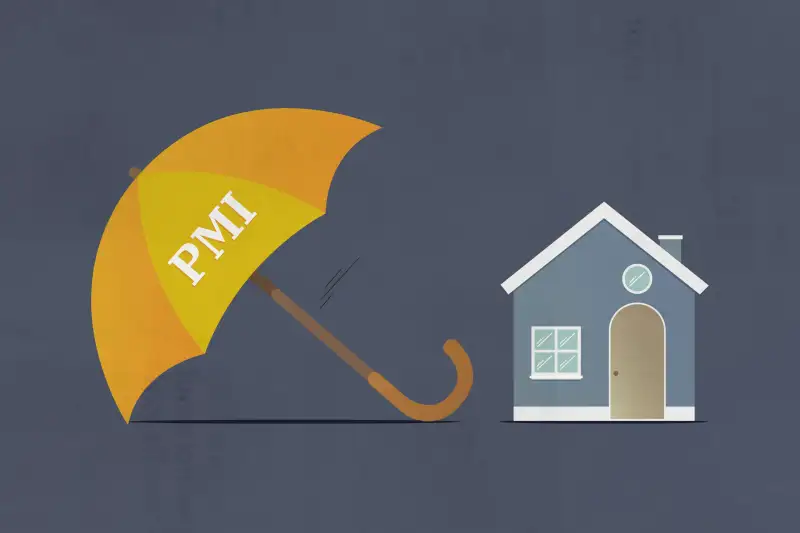How to Get Rid of PMI

Private mortgage insurance (PMI) is a type of insurance policy that protects your lender if you were to default on your mortgage payments.
PMI is required by most lenders if you can’t make a down payment of at least 20% of the home value, and can range from 0.5% up to 2% of the loan total. This amount — which can be hundreds of dollars — is added to your monthly mortgage payment.
However, you don’t need to pay PMI for the entire life of your loan.
Read on for ways to get rid of PMI.
Table of Contents
How to get rid of your private mortgage insurance
First, it’s important to note that all loans involve PMI. VA loans and some special government programs aimed at helping low-income borrowers buy their homes, for example, don't require mortgage insurance.
Other notable exceptions are loans backed by the Federal Housing Administration (FHA loans), which require a different type of insurance. The Mortgage Insurance Premium (MIP) works differently from PMI and is usually more difficult to eliminate, depending on when your loan originated.
Aside from those exceptions, however, most conventional loan servicers will require PMI if you give less than a 20% down payment.
There are four main ways you can stop making those payments:
Wait for automatic PMI cancellation
Under the Homeowners Protection Act, PMI should be cancelled when the amount owed reaches 78% of the original value of your home.
This percentage is also known as loan-to-value ratio (LTV), which is the opposite of your home equity. If the value of your house is $300,000, then PMI should be cancelled when you pay your home loan down to $234,000, even if the loan itself was for $260,000. This is why making a down payment of 20% — bringing your LTV ratio to 80% — generally helps you avoid PMI.
There are some exceptions to this 78% rule, however. First, you must be up to date with your payments; second, if your loan is considered high-risk (for example, if you have a low credit score), a mortgage lender can establish a different date for cancellation. However, as long as you maintain a good payment history and a good credit score, you can expect your PMI to be cancelled when you reach that 78% mark.
Request PMI cancellation
You can speed up the process a little bit by requesting a cancellation. When your LTV ratio reaches 80% ($240,000 out of the $300,000 original value in our example), you have the right to submit a written request to remove PMI payments.
Although this may seem like a slight difference — waiting for automatic cancellation at the 78% mark versus requesting it earlier at 80% — doing so could potentially save you hundreds of dollars in PMI costs.
As we said above, private mortgage insurance can range from 0.5% up to 2% of the total loan, and it’s calculated annually according to the remaining balance. On a $300,000 loan, a 1.25% PMI would translate to an additional $312.50 per month. By the time you reach an LTV ratio of 80%, you’ll still be paying $250 a month, so the savings by not waiting to reach 78% are worth the early arrangement. Also, if you can reach that mark sooner by making extra payments, you might increase your savings even more.
Bear in mind that cancellation could be denied if you have a history of late payments. It may also be denied if your home has declined greatly in value or if you’ve used your mortgage as collateral for a second mortgage (or home equity loan) or other junior liens.
Wait for final PMI cancellation
Final PMI termination is an automatic cancellation of your PMI payments when you reach your loan term’s midpoint. For instance, if you have a 30-year mortgage, you’ll stop paying PMI at the 15th year mark, regardless of your LTV ratio or your mortgage balance.
This is your best option if you’ve agreed to a balloon payment arrangement (low monthly payments with a large payment at the end of the term) and don’t reach the 78% within that time. It can also apply when you have a mortgage forbearance agreement after being delinquent in your payments.
Refinance to get rid of PMI
Although getting a mortgage refinance simply to get rid of PMI isn’t advisable (especially if you already have a low interest rate), its cancellation can be a nice bonus if you’re already planning to refinance.
If you still haven’t reached that 80% or 78% LTV ratio, and have a good reason to refinance — such as a higher credit score or lower interests on the real estate market, you could cancel PMI under the right circumstances.
If after a new appraisal you find out your home’s current value is lower than the home’s original value, for instance, you might reach the necessary LTV ratio with the equity you already have. If that’s the case but you’re still not there, you could pay a lump sum to reach it.
You can see if it’s a good idea to refinance by using a mortgage refinance calculator, taking into account current interest rates, an improved credit score and the type of mortgage loan you want — changing from FHA loans to conventional loans, for example.
You can check some of the best mortgage refinance companies here if you think it’s the right time.
How to get rid of PMI FAQ
What is PMI?
When does PMI go away?
How to avoid PMI
How to get rid of PMI on FHA loan?
Summary of Money’s How to Get Rid of PMI
- PMI protects your lender in case you default on your mortgage.
- Putting 20% down is the only sure-fire way to avoid PMI on a conventional loan.
- Under the Homeowners Protection Act establishes, PMI is automatically removed from your mortgage payments once your loan-to-value ratio reaches 78%, except in some high-risk cases.
- You can request PMI cancellation once your LTV reaches 80%.
- Refinancing to cancel PMI isn’t advisable, but it can sometimes lead to PMI cancellation.

